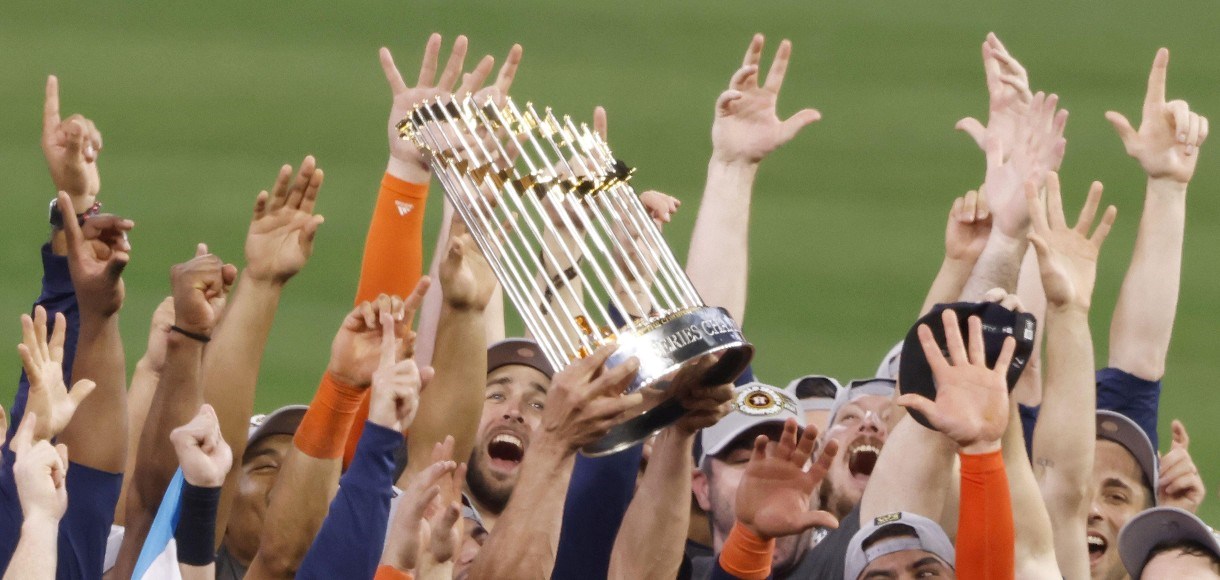How do the MLB playoffs work? MLB playoffs explained
 Source: Alamy Stock Photo
Source: Alamy Stock Photo
From the postseason format to financial bonuses, our guide contains everything you need to know about the Major League Baseball playoffs.
Visit Betway's baseball betting page.
What are the MLB playoffs?
The Major League Baseball playoffs is an elimination tournament held following the end of the regular season every year.
The purpose of the postseason is to determine the champions of the World Series – MLB’s annual championship game.
What is a wild card?
Twelve teams qualify for the playoffs each year – six from each of the two leagues that make up MLB, the American League and the National League.
The six teams that win each of the divisions – AL East, AL Central, AL West, NL East, NL Central and NL West – qualify automatically for the playoffs.
The six remaining teams are known as wild cards – these are the three teams from each of the AL and NL that compiled the best regular season records without winning their division.
How are the MLB playoff teams seeded?
Before the playoffs begin, each team in both leagues is seeded between 1 and 6 according to the following criteria:
No. 1 seed: The best regular season record in the league
No. 2 seed: The division winner with the second-best record
No. 3 seed: The division winner with the third-best record
No. 4 seed: The wild card team with the best record
No. 5 seed: The wild card team with the second-best record
No. 6 seed: The wild card team with the third-best record
How do the MLB playoffs work?
The first round of the playoffs is the best-of-three Wild Card Series, which replaced the single-elimination Wild Card Game from 2022 onwards.
The Wild Card Series involves teams seeded from 3 to 6, with the No. 1 and No. 2 seeds in each league receiving a bye. The No. 3 seed - the division winner with the third-best record - plays against the No. 6 seed, while the No. 4 and No. 5 seeds face off.
Both series take place at the ballpark of the higher seeded team, with games taking place on three consecutive days so the top two seeds are not left waiting too long.
The two winners of the Wild Card Series advance to the Division Series – the second round of the playoffs – with the losers eliminated from the postseason.
The Division Series, known as either the ALDS or the NLDS, is essentially a quarter-final – there are eight teams remaining at this point.
In the Division Series, the No. 1 seed will play the winner of the No. 4 vs No. 5 series, while the No. 2 seed will face the winner of the No. 3 vs No. 6 series. This is to prevent top seeds facing another division-winning team in their opening playoff series.
The Division Series is a best-of-five format, with the first team to win three games advancing to the next round.
The two winners of the Division Series from each league then advance to the League Championship Series, or the semi-final stage – known as the ALCS and the NLCS.
The LCS is a best-of-seven format, so the first team to win four games progresses.
The winners of the ALCS and NLCS – the American League champions and National League champions – then advance to the World Series.
The World Series is also a best-of-seven, and the first team to win four games is declared champions for that year.
To find out more about the World Series, check out our in-depth guide.
What is home-field advantage and how does it work?
With each round of the playoffs consisting of an odd number of games, one team always gets to host more games than the other. This is known as home-field advantage.
In the Wild Card Series, the team that is seeded higher hosts all three games. This is to prevent the Wild Card Series from going on too long, which would be a disadvantage to the top two seeds, who are granted a bye into the Division Series.
In the best-of-five Division Series, home-field advantage is in a 2-2-1 format. This means the higher seed will host the first two games and then Game 5, if required. The lower seed will host Game 3 and 4.
In the League Championship Series, the higher seed is again given home-field advantage, which is in a 2-3-2 format. The higher seed therefore hosts the first two games and the final two games, with the lower seed hosting Game 3, 4, and 5.
In the World Series, the league champion with the better regular-season record is afforded home-field advantage. Just like the LCS, the World Series is a 2-3-2 format – the team with home-field advantage hosts Game 1, 2, 6, and 7.
How do postseason bonuses work?
Every player that competes in the MLB playoffs is entitled to a financial bonus, but the amount is determined by several factors.
The bonus pool is funded by 60 per cent of the gate receipts from certain games in each round – both Wild Card Series, the first three games of each Division Series, and the first four games of each League Championship Series and the World Series.
By limiting the pool to the minimum number of games each series, it disincentivises players from extending the series for monetary gain.
The further your team makes it in the playoffs, the more bonus you are entitled to – the World Series winners get 36 per cent of the pool, the runners-up get 24 per cent, the two LCS losers get 12 per cent, the four DS losers get 3.25 per cent and the four Wild Card losers get 0.75 per cent.
When the money has been divided between the 12 clubs, it is up to the players to determine who gets what.
In a meeting chaired by a union representative, the players who have been with the team for the entire season decide how the money is shared out. They are automatically entitled to a full share, while players who have not been with the team for the full season, coaches, trainers and other clubhouse staff may be entitled to a bonus or a cash award depending on the vote.
The 2022 pool amounted to a record $107.5m, the highest total in league history. Full shares for the World Series champion Houston Astros were worth $516,347 each. The Astros issued 59 full shares and 14.14 partial shares, as well as $940,000 in cash awards.




































